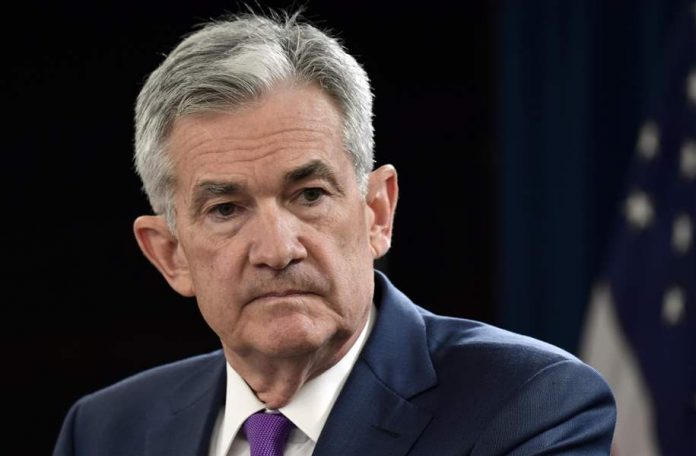Stocks plunged this morning as the selloff that began yesterday intensified. The Dow, S&P, and Nasdaq Composite all fell while bond yields soared.
A new batch of poor earnings, reported before the market opened, only made things worse.
Verizon (NYSE: VZ) and Gap (NYSE: GPS) were among the largest companies to report their quarterly results. Both stocks disappointed shareholders and endured major retracements as a result. VZ shares tumbled 6% while GPS dropped a stunning 18% after the retailer slashed its full-year outlook.
It was bad news that compounded the market’s biggest concern: that companies won’t be able to cope with rising rates and cooling demand. This was initially fueled by comments from Fed Chairman Jerome Powell yesterday afternoon.
Powell addressed the International Monetary Fund, saying it was “appropriate in my view to be moving a little more quickly” to raise interest rates and he thinks “there is something to be said for front-end loading any accommodation one thinks is appropriate.”
“I would say 50 basis points will be on the table for the May meeting,” Powell concluded.
Freshly-stoked rate hike fears caused a massive intraday reversal following Powell’s speech. Poorly received earnings only amplified those fears this morning.
“Stagflation concerns resurface on the back of real-time signs of a tight labor market and waning business sentiment, coupled with another bounce in 10-year Treasury yields — and all peppered with a deluge of earnings releases,” wrote Goldman Sachs managing director Chris Hussey.
But just how high will rates actually go? Last month, it seemed clear that the Fed would give up on quantitative tightening (QT) in response to a recession.
Now, though, investors are wrapping their heads around the idea that the Fed will tighten no matter what in an attempt to beat back inflation.
Many Wall Street strategists believe that’s the case, too. Nomura’s North America Economics team took things a step further in a morning note to clients, predicting an even more hawkish rate hike schedule for the remainder of the year.
“We expect the first 75bp rate hikes since 1994 at the June and July meetings following a 50bp rate hike in May,” Nomura’s analysts wrote.
“We believe momentum for a 75bp rate hike at some point later this year has increased; we now expect a 75bp hike at both the June and July FOMC meetings, following a widely expected 50bp hike in the May meeting.”
If Nomura’s prediction comes true, that means the Fed will end up raising rates by a whopping 2.00% through July, which would undoubtedly spark a recession.
It could also be the best way forward, however, since a series of highly aggressive rate hikes may lead to a quicker recovery as it would allow the Fed to then restart quantitative easing (QE) sooner.
That skews bullish long-term. But for now, the market is still in the process of pricing in a major rate spike. Which, if Nomura’s right, could lead to additional losses before sentiment improves and stocks swing higher once again.








